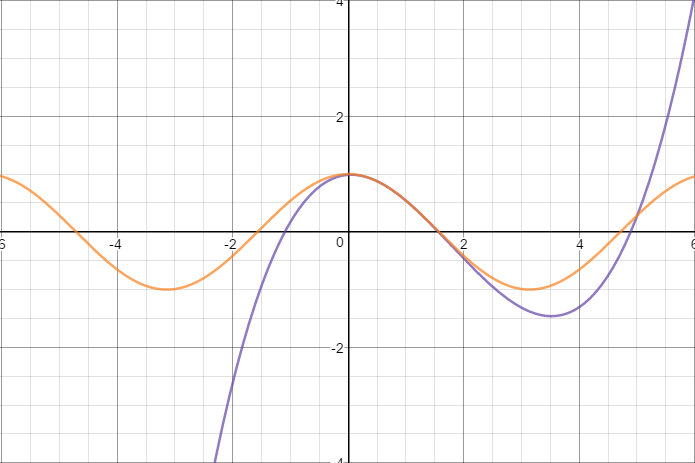How do you find the Taylor polynomials of orders 0, 1, 2, and 3 generated by f at a f(x) = cos(x), a= pi/4?
1 Answer
Explanation:
Remembering that any function
We can compute the required derivatives (in this case three) and find a general formula for our infinite sum.
Calculations:
Now that we have our derivatives at point
To check our answer, we can always graph both equations:
Graph of
graph{cos x [-7.9, 7.895, -3.95, 3.95]}
Graph of
graph{sqrt(2)/(2) - (sqrt(2)/(2)(x-pi/4))/(1!) - (sqrt(2)/(2)(x-pi/4)^(2))/(2!)+ (sqrt(2)/(2)(x-pi/4)^(3))/(3!) [-7.9, 7.895, -3.95, 3.95]}
Overlapping both graphs gives you the following:

If we increase the number of polynomial terms in our series we automatically make it a better approximation to our function.

